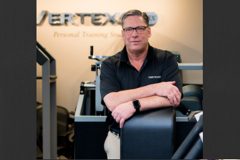September is Prostate Cancer Awareness Month
Are You Managing Your Risks for Prostate Cancer?
No one wants to live their life in fear of a disease which can seem scary and impossible to control, so it’s easy to develop a dismissive attitude towards your risk factors for prostate cancer. However, as we are learning, cancer isn’t always a lightning bolt from the blue that strikes at random–medical science has identified several risk factors that can help us make better decisions when managing our health. For example, a man at increased risk for prostate cancer may want to share the information with their primary care doctor, and schedule more frequent cancer screenings. Anyone with increased risk factors is also going to want to get a better understanding of the surprising way that exercise can help in the prevention and treatment of cancer.
The Risk Factors
The first thing to understand is that a risk factor is just that–a factor. According to a prostate cancer resource on cancer.net, “A risk factor is anything that increases a person’s chance of developing cancer. Although risk factors often influence the development of cancer, most do not directly cause cancer. Some people with several risk factors never develop cancer, while others with no known risk factors do. However, knowing your risk factors and talking about them with your doctor may help you make more informed lifestyle and health care choices.”
So, keep that in mind while informing yourself about the risk factors. Common risk factors for prostate cancer according to WebMD include:
- Age: This is the biggest contributing factor. About 60% of all prostate cancers are diagnosed in men older than 65. A white man’s risk increase significantly after the age of 50, while a black man should start thinking about screenings after the age of 40. Paradoxically, as you age, your odds of getting prostate cancer increase, but the disease tends to behave less agressively the older you are, especially after 70.
- Race: We don’t know why, but prostate cancer affects men disproportionately by race. African-American men get prostate cancer 60% more often than white American men do, and the cancer is likely to be more aggressive. Oddly, they’ve also found that men living in Japan and Africa have a low incidence of prostate cancer, but these rates increase sharply for men of African or Japanese descent who live in America. For African-American men, testing for prostate cancer should begin at 40 instead of 50. Hispanic men, meanwhile, are less at risk than white or black men.
- Family History: About 20% of all prostate cancer occurs with a family history of the disease, and is known as familial prostate cancer. Prostate cancer that is passed directly from parent to child through a gene mutation is known as hereditary prostate cancer, and is much rarer at 5% of cases. If your family history includes any of these features, you should talk to your doctor about additional screenings:
- 3 or more first-degree relatives with prostate cancer.
- Prostate cancer in 3 generations on the same side of the family
- 2 or more close relatives, such as a father, brother, son, grandfather, uncle, or nephew, on the same side of the family diagnosed with prostate cancer before age 55
The Fitness Connection
It’s probably no surprise to you that increasing your overall health and strength can help you ward off and fight off many illnesses. But the efficacy of adding a strength training program to your lifestyle might surprise you.
Steve Morrison works out with me at Vertex Fitness, and has been a client for over a decade. He’s also a survivor of prostate cancer. Steve had surgery to remove his cancer, and he credits his incredibly quick recovery time with the time he’d spent at Vertex Fitness. According to Steve, “My doctors said my recuperation was absolutely linear to the fact that I was in good shape and that I had a strong core, and that I was doing exercises that were very conducive to recuperating from that surgery.”
To say that Steve had a speedy recovery would be an understatement–he returned to work three days after the surgery, and was up and walking within a few hours of the procedure. He walked two miles on his treadmill the day after her surgery. As Steve concludes, “I was definitely a beneficiary of the years of working out at Vertex and working out through Dwayne’s method. I’m 58 right now and I’m in pretty damn good shape. Vertex has been my main method of working out for over 14 years.”
To manage your risks for cancer and other serious ailments, it’s important to talk to your doctor about your risk factors, get the necessary screenings, and participate in an exercise program that will increase your body’s strength and ability to heal itself.
Request a complimentary first session at Vertex Fitness, Voted the BEST Personal Training Studio on the Main Line
Click HERE and we will schedule a session to try it yourself








Article Comments